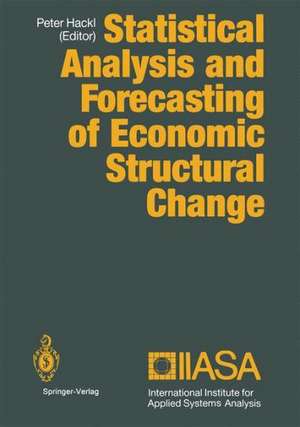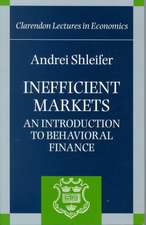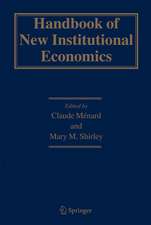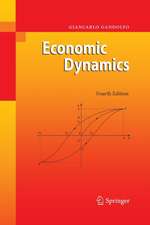Statistical Analysis and Forecasting of Economic Structural Change
Editat de Peter Hacklen Limba Engleză Paperback – 22 dec 2012
Preț: 397.91 lei
Nou
Puncte Express: 597
Preț estimativ în valută:
76.19€ • 79.33$ • 63.21£
76.19€ • 79.33$ • 63.21£
Carte tipărită la comandă
Livrare economică 14-28 februarie
Preluare comenzi: 021 569.72.76
Specificații
ISBN-13: 9783662025734
ISBN-10: 3662025736
Pagini: 512
Ilustrații: XIX, 490 p. 64 illus.
Dimensiuni: 170 x 242 x 32 mm
Greutate: 0.81 kg
Ediția:Softcover reprint of the original 1st ed. 1989
Editura: Springer Berlin, Heidelberg
Colecția Springer
Locul publicării:Berlin, Heidelberg, Germany
ISBN-10: 3662025736
Pagini: 512
Ilustrații: XIX, 490 p. 64 illus.
Dimensiuni: 170 x 242 x 32 mm
Greutate: 0.81 kg
Ediția:Softcover reprint of the original 1st ed. 1989
Editura: Springer Berlin, Heidelberg
Colecția Springer
Locul publicării:Berlin, Heidelberg, Germany
Public țintă
ResearchCuprins
I Introduction.- 1 What Can Statistics Contribute to the Analysis of Economic Structural Change?.- II Identification of Structural Change.- 2 Testing for Structural Change in Simultaneous Equation Models.- 3 Specification and Stability Tests versus Jackknifing: Some Illustrative Examples S.- 4 The Robustness of the Chow Test to Autocorrelation among Disturbances.- 5 Tests against Nonconstancy in Linear Models Based on Counting Statistics.- 6 Nonparametric Tests for Shift and Change in Regression at an Unknown Time Point.- 7 Detection of Join Point in Regression Models.- 8 On the Identification of Time for Structural Changes by MOSUM-SQ and CUSUM-SQ Procedures.- 9 The Local Power of the CUSUM-SQ Test against Heteroscedasticity.- 10 Bahadur Efficiency of Tests for a Shift in Location of Normal Populations.- 11 The Use of Graphical Displays in the Analysis of Structural Change.- III Model Building in the Presence of Structural Change.- 12 Adaptive Estimation and Structural Change in Regression and Time Series Models.- 13 An Adaptive Method of Regression Analysis.- 14 Changing and Random Coefficient Models. A Survey.- 15 Nonparametric Estimation of Time-Varying Parameters.- 16 Latent Variables in Regression Analysis.- 17 Structural Change and Time Series Analysis.- 18 Thresholds, Stability, Nonlinear Forecasting and Irregularly Sampled Data.- 19 Forecasting in Situations of Structural Change: A General Approach.- 20 Updating Parameters of Linear Change Point Models.- IV Data Analysis and Modeling.- 21 Change Point Problem Relating to the Poverty Structure.- 22 Statistical Identification of Nonlinear Dynamics in Macroeconomics Using Nonlinear Time Series Models.- 23 Econometrics of Technical Change: Techniques and Problems.- 24 Local Autoregression Models for Detection of Changes in Causality.- 25 Investment, Taxation, and Econometric Policy Evaluation: Some Evidence on the Lucas Critique.- Author Index.- List of Authors.















